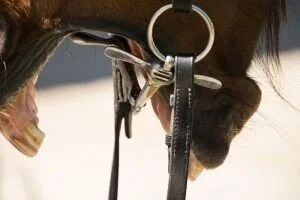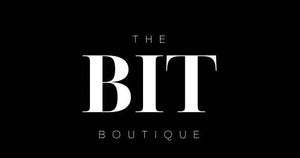
The Importance Of The Correct Bit Fit
*Warning - some graphic photos*
What is the importance of correct bit choice, and more importantly, the correct bit fit? Do you know for sure that your bit is correctly fitted to your horse, or do you think he may be exhibiting signs of resistance to the bit? Many horse owners aren’t aware of the anatomy of the horse’s head, the different types of bits and their uses, and how to correctly fit a bit and in some cases even a bridle. I hope to educate everybody on the importance of these factors to eliminate poorly fitted tack.
We can have a look at the anatomy of the equine head first – their jaws are very well designed for carrying a bit. The horse’s dentition consists of the incisors (front teeth) and canines, then an interdental space (the bars) before the molars. The incisors are used for picking and tearing grass, while the molars are the chewing teeth. The bit rests on the bars between these sets of teeth. Different bits apply pressure to different parts of the horse’s head in order to achieve slightly different results. There are seven different pressure points on the horse’s head which can all be activated by different types of bit. These pressure points are the:
1. Poll
2. Tongue
3. Lips
4. Palate
5. Bars
6. Chin groove
7. Nose

Every horse has their own preference of which pressure points they are more or less sensitive too, and so finding the right bit for your horse can be a case of trial and error until you find the one he likes best. Also, as your horse grows and his skull develops, or he goes up or down the training levels, so too may his bitting needs change.
A common misconception is that the bigger the horse, the larger his bit must be. This is untrue, as horses have unique jaws, and although a horse’s head may appear larger, his jaws may be narrower, tongue may be fleshier, or his bars may be thinner. There are many variations to the size and shape of their oral cavity, and therefore it is very important that your horse is fitted to his bit correctly. The distance between the tongue and hard palate (roof of the mouth) differ in horses by as much as an inch, therefore another myth dispelled is that a thicker bit is always kinder than a thinner bit. In horses with a larger tongue and less space between the palate, the thicker bit will be more uncomfortable, and “harsher”.
Another factor that is important to understand is that the head and mouth are filled with incredibly sensitive nerves that instantly translate rein pressure to the brain, thanks to the location of the facial nerve.

The twelve cranial nerves control the functions and senses such as taste, touch etc, and they also control the salivation and mastication (chewing). Chewing, salivating, swallowing and flexion of the head are directly correlated to pressure on the bit as the nerves are so close to the surface.

C5 – the trigeminal nerve, is the most important to consider when bitting, as it originates at the pharynx and splits into three branches supplying the top and bottoms jaws, muzzle and nasal cavity. Scientific studies have shown that these nerves are so sensitive they can even react to light – which may be a reason for chronic headshaking.

“Researchers have shown that an ordinary rider with a light hand exerts hundreds of pounds of pressure per square centimetre (0.15inch) on the bit. This is felt acutely in the trigeminal nerve upon which the bit is sitting.” Emily Esteron, author of the Ultimate book of horse bits.
Other hypersensitive areas include the lips and the poll and while some horses will tolerate poll pressure, others will evade it. Horses with ill fitting or ill matched bits or bridles show signs of pain and translate this to us in what may be deemed as bad behaviour or a reluctance to work. Head shaking, head tossing, bolting, bucking, rearing and many other behaviours can be your horse’s way of telling you that there is pain in his mouth, which can then radiate down his neck, spine and affect the entire body. Other ill fitting parts of the bridle include too tight cheek pieces, which can irritate the facial nerve, too tight nosebands which can inhibit breathing, tight flashes and curb chains that cause pain in the chin groove, too much pressure on the poll and pinched ears from ill-fitting crown pieces.
As well as potentially causing pain, an ill-fitting bit or bridle will scramble the message that the rider is trying to communicate to the horse. If the rider is trying to get the horse to flex, but the bit slides through the mouth, or pinches the cheek, then the horse will not receive the message but will receive pressure in the wrong areas, and riders can mistake this for a horse being stubborn or lazy, resulting in harsher aids which also get misconstrued… and so the cycle continues.
Common signs of an ill-fitting bit or bridle:
· laying on the bit
· not taking up the contact
· grinding excessively
· grabbing or pulling the bit out of your hands
· Foaming excessively
· Resisting flexion on one or both sides
· Tossing or shaking his head
· Sticking out his tongue to one side (to create a cushion between the bit and his bars) or getting his tongue over the bit
· Rearing, bucking, bolting, jacking up
· Working behind the bit

If your horse is exhibiting any of these signs, then it is important to get a professional to check your horse’s mouth and teeth and assess your bit choice. In my equine dental and bit fitting service I will perform a full dental examination on your horse to ensure that his teeth are healthy and in good shape, then I will measure the various structures inside your horse’s mouth. I will recommend a variety of bits for you and your horse and you will have to opportunity to ride in them while we both make an assessment of your horse’s acceptance of the bit, until we find the magic fit. Once we have found your match then you can purchase the bit in the correct size for your horse and then enjoy the difference of a happy and pain free mouth.
Some common oral injuries caused by bits:

Photo credit: mouthofthehorse.com
Pinching of the corners of the cheeks. Bits that are too long, or too short can cause the soft tissue of the cheeks to pinch against the metal of the bit. Loose ring bits that are too narrow are likely to cause pinching, as are bits that are too wide and slide from side to side through the mouth.

Photo credit: mouthofthehorse.com
Pressure wounds on the sides of the mouth are caused by ill-fitting bits and bridles that continuously or repeatedly put pressure in the same spot, leading to reduced blood flow and hyperkeratosis (thickening of the tissue). These types of wounds take longer to heal than lacerations from sharp enamel points on the teeth.

Injuries to the bars of the mouth. Bits that are too tight, or that are put into the wrong hands, can cause damage to the bars of the mouth. For example, a simple snaffle has a nutcracker effect against the bars of the mouth, so if the reins are pulled back continuously and repeatedly without release, say by an inexperienced rider, the bars will become bruised and damaged. Thin wire or twisted bits also have serious potential to cause injury to the bars of the mouth. The rearing bit, commonly seen in racing stables and used to control the horse whilst leading, can cause serious damage to the horse if the leader yanks on the lead to correct the horse, which unfortunately is widely seen in inexperienced handlers.

Tongue injuries are a rarer form of injury but still occur. The above racehorse has had his tongue lacerated from the underneath, and this went unnoticed for a few days until the handler noticed a bad odour coming from his mouth. The lacerations had filled with feed which was decomposing. This injury mostly likely occurred by a sharp jab on either a rearing bit or snaffle bit once the horse had gotten his tongue over the bit. When the tongue goes over the top of the bit, then the bit no longer has any effect in communicating with the horse.
